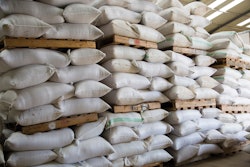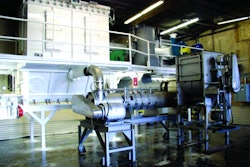
The business world has always been challenged by dealing with change and the uncertainty that accompanies it. The past months, however, have brought unprecedented change, including adverse weather events, international trade wars, business regulations, and corporate tax cuts. The rate of technological change in areas such as communication speed, the volume of data (big data), and computing power are increasing at exponential rates. Change usually brings risk and uncertainty along with it.
Sometimes change turns out to be positive and results in a benefit for your business. Sometimes it’s negative and a detriment for your feed and grain business. Sometimes change has little to no impact on your business, but affects your competitors, customers, and buyers.
Common responses
Research has shown that business managers respond to change in a couple of common ways. Some managers ignore it. While this response may be common, it is not the most beneficial. Planning for change will allow you to take advantage of opportunities and to be prepared for the negative events to minimize the cost to your business.
A second common response is to just extrapolate from current trends when looking to the future. While this approach does involve some active planning, which is clearly preferred to no planning, it has the downside of not using current information to make the best prediction and increases the chance that you will not be able to take advantage of key opportunities or protect yourself from negative events.
A third response is to raise the “hurdle rate” when undertaking projects. The key idea here is that as a manager you know that unexpected changes will happen and you want to be sure that your business will be in a position to continue business without interruption. Before you sign off on new projects, you may require the projects satisfy a higher “hurdle rate” – the rate of return that the project projections must exceed before you approve it moving forward. This ensures you are undertaking projects that are expected to be more profitable and you will have a cushion to work with. This approach suffers from not being strategic.
Strategic responses
Below we discuss a 6-step process that is straight-forward to use (the process outlined below is adapted from “Strategic Response to Uncertainty,” by Elizabeth Olmstead Teisberg, from the Harvard Business School ).
1. Brainstorm uncertainties
你的第一步战略反应是brainstorm and identify, by way of a list, all of the uncertainties that you can come up with, which you think will be important for your feed and grain business. This list will quickly become long, as the environment is rapidly changing. We recommend that you work with your people and divide this list into the items that are relevant for your business as a whole and those that are relevant for each specific division.
When creating this list stay focused on the uncertainties. These can include unexpected weather events, changes in government policies, actions that your competitors may take. It will be tempting to insert things at this stage associated with your actions as a manager — but wait, we will get to that in the second step.
As with everything associated with strategic planning, writing it down and documenting it is critical. It can be useful to set this up in a table format as you will see in the next steps.
2. Identify strategic choices(i.e. the things you as a manager can do)
In this second step, write down the things that you can do in response to each of the uncertain events. As you think about the impact of weather changes on your feed and grain business, you can ensure that the exterior of your buildings are well-maintained to provide protection from damage in high winds. Check your insurance policy and ensure you have the appropriate coverage. In anticipation of changes in government policy, have your business structured to take advantage of the greatest benefit from the change.
Be cognizant of your competitors and think about areas where they may not be able to serve some customers — have you developed a strategy to be ready to fill that void if and/or when it comes about?
3. Develop internally consistent visions
It’s important that this exercise be credible and realistic. As you think about the change that the economy is experiencing and how your business fits into that change — be deliberate about developing scenarios for the future. This process is sure to generate and identify new insights and plans for a successful strategy. In the process examine the assumptions that are common as business forecasters are making their predictions — then consider “how realistic are those assumptions? and “what would happen if we changed the assumptions?”
As with the other stages, be sure to put pen to paper and document these ideas.
4. Check whether uncertainty is critical in decision
In this fourth step, identify those areas where you will focus your attention as you develop your strategy. There are some decisions that you will make no matter what. At this step, the idea is to identify those decisions then move on to other areas as you develop your strategy. If your decisions will be the same under all scenarios, then it’s likely that the uncertainty is not that critical to your overall strategy, so move on and spend time on other areas that do matter.
5. How do your firm’s actions affect future uncertainties?
In this stage, the focus is on the fact that economies are dynamic and your actions will affect your competitors and the actions of your competitors will similarly affect your business.
As a result, at this stage, you need to analyze the impact of your potential actions on the market, on your customers and on your competitors.
A useful tool here can be a decision tree. Draw a circle to represent a decision point. Consider two or three different decisions and illustrate those with lines. At the end of each line draw another circle and from this circle draw lines (usually two or three) to illustrate the response from your competitors. Once you have this all drawn out on paper, you can look at the different paths that the lines represent. This visual will give you a sense of the implications of the uncertainties and outcomes from different actions.
This greater awareness will enable you to make better decisions. Harvard Business Review has a nice article on using decision trees, found at: https://hbr.org/1964/07/decision-trees-for-decision-making.
6. Formulate a strategic response
You can now formulate your strategic response. In completing the five steps above, you have identified and written out the key sources of change/uncertainty. You have identified the different decisions that you can make. Then you developed internally consistent visions. You sorted out those areas where uncertainty would actually affect your decision-making and then considered the interconnections of your decisions with your competitors. With this groundwork, your next step is to finalize these thoughts into a strategic plan for dealing with change and uncertainty.
Specific challenges
Weather is always a source of uncertainty in agriculture. What are the weather threats that are more important for your feed and grain business? In brainstorming the possibilities be sure and list the common weather events, but also the extreme weather conditions that happen less frequently. Being ready for those big floods, storm damage, etc. can be critical for your business success. Strategies can include having your buildings in good repair, having appropriate insurance, having your employees trained and ready to respond in a weather emergency and having a weather emergency plan in place and followed when needed.
Another significant source of change and uncertainty in rural areas are labor markets. Finding and keeping good help continues to be a challenge. Anything you can do to “prime the pump,” maintain a list of potential employees and offer internships and/or part-time positions during harvest or other busy times to try out potential employees — will pay dividends.
In addition, promoting good employees from within and providing them with some good soft-skill training in communications, conflict and project management, and leadership will help them get up to speed more quickly.
Final thoughts
The pace of change and business uncertainty is increasing. Systematically developing a strategic plan to be ready to either take advantage of change with positive implications or minimize the impact of change with negative implications will enable your feed and grain business to thrive.
Give some thought to having some of your key people participate in a seminar on leading and managing change.
There are a number of consultants and webinars that can assist you in this area, and which can be helpful in assisting folks in adapting to and facilitating the constant change we all face. ■





















